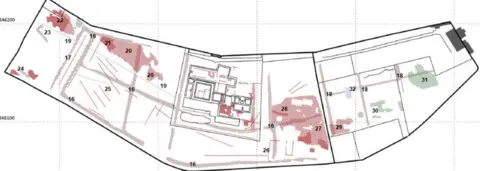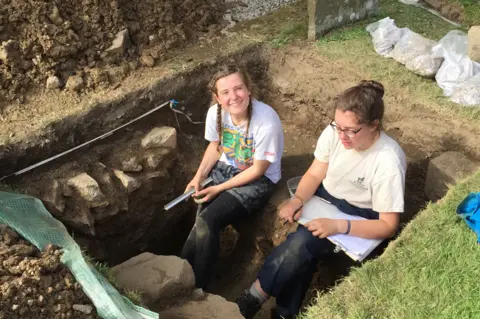Search for lost early monastery at Old Deer
 Cameron Archaeology Ltd
Cameron Archaeology LtdFresh efforts are to be made to locate the site of a lost early monastery connected to the Book of Deer, a 10th Century illuminated manuscript.
The Monastery of Deer in Aberdeenshire had the historic book in its care by 1000AD, before the building fell out of use when its monks moved to an abbey.
Archaeologists have been actively seeking the monastery site since about 2008.
A new nine-day dig is to begin on Saturday in fields near Deer Abbey.
Previously, more than 30 tests pits were carefully dug at the graveyard of a 1780-built church in the effort to find evidence of the monastery.
The latest project, led by Aberdeen-based Cameron Archaeology Ltd, focuses on the fields near the abbey after a geophysical survey carried out by Rose Geophysical Consultants found "interesting anomalies" underground.
'Tantalising clues'
Archaeologist Alison Cameron said evidence of the monastery may include wooden post holes and stone rubble.
Similar archaeology was uncovered during excavations of a Pictish monastery at Portmahomack in the Highlands.
 Cameron Archaeology Ltd
Cameron Archaeology LtdMs Cameron said details written by monks in Scots Gaelic in the margins of the Book of Deer provided "tantalising clues" of the Monastery of Deer surviving for a time after the monks moved to Deer Abbey.
These clues include suggestions that it was visible from the abbey.
As with the previous digs, local primary and secondary pupils, along with members of The Young Archaeologists Club and students of Aberdeen and Edinburgh universities will be involved.
An open day at the dig is to be held on 1 July.
The Book of Deer is the only pre-Norman manuscript from an area of north east Scotland known as former Pictland.
Archaeologists and historians say that it provides "a unique insight" into the early church, culture and society of this period.
Amid the Latin text and the Celtic illuminations are the oldest pieces of Gaelic writing to have survived from early Medieval Scotland.
